Combat aircraft. Pe-3 and Pe-3 bis. Twice born in spite of everything
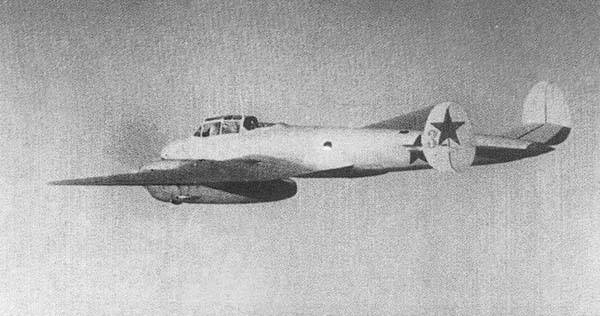
For a very long time, I admit, I was getting close to this plane. No wonder, very little has been written about Pe-3. If there is a book about Pe-2 - at best, Pe-3 will be given a chapter. Say, it was. If the article is enough, a few sentences are enough. But there are no books or more or less serious studies.
True, there is a hint of a certain ray of light in the dark kingdom, this is the work of Andrei Morkovkin. When the book is finished, I am sure it will be a pleasure to all lovers of our flying stories.
We’ll not talk about this very controversial aircraft in such detail as Morkovkin’s, but links to ready-made chapters will be at the end of the article, so anyone who is interested has a lot of useful and detailed information.
Pe-Xnumx. Heavy fighter
Few people know the secret that the forerunner was the 100 fighter, which was planned as a high-altitude interceptor. However, it turned out that the fighter was urgently converted into a dive bomber, and the aircraft went into service as the Pe-2.
However, in the summer of 1941, when the Germans were able to deliver air strikes in Moscow, they remembered the forerunner plane again.
The Germans were by no means fools, and understood very well that a raid on Moscow during the day was suicide. They appreciated the air defense of Moscow very quickly. But at night it was possible to try to impose a battle on their own terms.
The first raid ended, to put it mildly, not very successfully. Firstly, the damage was minimal, and secondly, the loss of 20 or 22 aircraft - this is cool for such an operation, since about two hundred aircraft were involved.
But then the Luftwaffe began to work in small groups, and difficulties began for ours.
A group in 6-9 aircraft is much more difficult to detect than a crowd of several hundred, this is understandable. It is easier for a single bomber to jump out of the beam of a searchlight, and it is more difficult for fighter aircraft to find it.
Given that we did not have any full-fledged nightlights, the task turned out to be very difficult. Often, ordinary fighters did not have time to gain altitude and catch up with the bomber.
The logical decision was, if not the creation of a night fighter, which in 1941 was simply unrealistic for a number of reasons, then at least a barrage interceptor, which would be able to cover a certain area for a long time and attack bombers if they appeared.
Here they remembered that the Pe-2 was originally just such an aircraft.
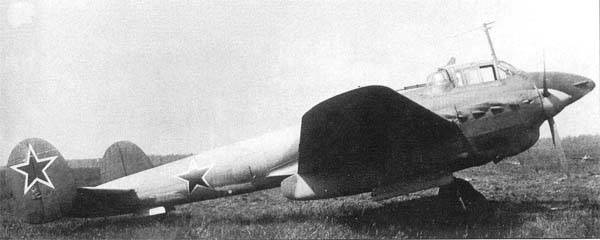
And on August 2 on 1941, by the decision of the State Defense Committee, the design team of V. M. Petlyakov was tasked with creating a heavy fighter. Deadline ... August 6 1941
That's right, 4 days were allotted to remaking a dive bomber back into a heavy fighter.
But as usual, the task of the party and government in KB Petlyakova coped. And if they hadn’t done it, I think everyone would again be in the next “sharaga”. Created specifically for this occasion.
But given that the enemy was already on the outskirts of the capital, no one had to be driven.
No drawings were made, all improvements were carried out locally. Battle collective farm. The main goal of the improvements was to increase the range by facilitating the design and increasing the amount of fuel, and strengthening weapons.
It was possible to increase the amount of fuel on 700 l by installing additional tanks: one in the bomb bay and two in place of the shooter's cabin. Oval side portholes and the top hatch were sewn up, removed the lower machine gun installation. But the bottom hatch was left.
To facilitate the construction, the electric control system for dropping bombs was dismantled, the brake grilles under the consoles, and the radio meteorological reserve were removed. Of the bomb holders, only four were left - two external and two in the engine nacelles. They replaced the radio station of the RSB-bis bomber with a fighter version of the RSI-4.
Regarding the replacement of the radio station, there are several opinions. Morkovkin believes that everything is correct, since the Pe-3 was not a fighter of long-range escort, he did not need a long-range radio station and radio half-ammunition. You can read about it with him.
I completely disagree with him. The aircraft was set to a flight range of 2000 + km, respectively, the combat radius was obtained somewhere in the region of 700-800 km.
The communication range of the aircraft with the ground using RSI-4 was a maximum of 100-110 km, and with other aircraft even less - 50-60 km. Plus, lightening of the structure by removing the radio half-pass.
Honestly, it was not entirely clear to me how it was planned to aim and correct such a night fighter. In fact, it turned out some kind of blind poking in space in the hope of the light of the enemy spotlights.
Strengthening weapons turned out to be nominal. Or rather, minimal. We added one BK machine gun in the bow and one ShKAS in a fixed tail unit (now there were gas tanks instead of the shooter).
As a result, the aircraft had offensive armament with two BK machine guns (150 cartridges ammunition per barrel) and one ShKAS (750 cartridges) and two ShKAS defenses, one of which was served by a navigator, and the second was fixedly mounted.
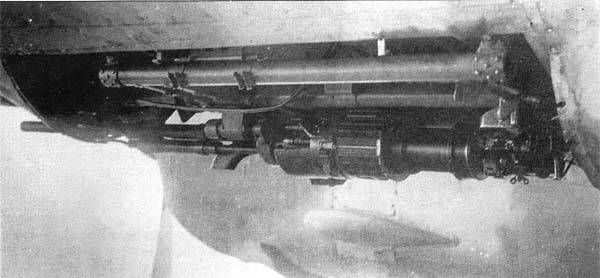
As a result, the aircraft remained in the same weight category as the Pe-2, although the range (2150 km) and speed (530 km / h at an altitude of 5000 m) increased slightly.
But in general, the plane came out very so-so. For 1941 of the year - especially. The same stunted and feeble Messerschmitt Bf.110С with DB601A motors turned out to be stronger than the Pe-3. With almost the same range, ground speed (445 km / h) and climb time 5000 m (8,5-9 min), the 110 was lighter by 1350 kg and had better maneuverability in the horizontal plane.
The armament of the Bf.110С was one and a half times more powerful in the mass of a second volley due to the 20-mm gun and four machine guns of the 7,92-mm caliber.
And since the fall of 1941, when Bf.110E appeared in the sky with more powerful DB601E motors, the 110 became faster in all altitude ranges.
To compare with the older in time development of the American P-38 is generally sad. Battery of 20-mm guns and four machine guns 12,7-mm, higher speed and - armor! Which Pe-3 did not have at all.
Here it is appropriate to recall again the VI-100 created by Petlyakov, “Sotka”, on the basis of which the Pe-2 bomber was made. VI-100 originally had offensive weapons 2 ShVAK guns 20-mm with ammunition 300 shells on the barrel and 2 machine gun ShKAS 7,62-mm with ammunition 900 cartridges.
Pe-3 looks very faded against its background. But this is a fee for a quick remake. After all, the Pe-3 was made on the basis of the Pe-2, and not the VI-100, but for the dive bomber, just a large glazed area of the bow, which provided ease of orientation and aiming, was very important.
Naturally, the rush and 4 of the day for everything simply did not allow redesigning the bow of the aircraft and marking more powerful weapons there. Testers from the Air Force Research Institute noted precisely these shortcomings in the reports: weak armament, lack of reservation, weak radio station.
It was recommended to install one 20-mm ShVAK gun, and replace the machine gun of the navigator of the 7,62-mm caliber with a large-caliber Berezina.
But that was not all.
When shooting offensive machine guns, it turned out that the plexiglass nose of the fuselage does not withstand the pressure of muzzle gases and collapses. Shells flying when shooting in the air hit the front skin of the wing and the lower surface of the fuselage. And during night firing, the flame of the shots blinds the crew, and the scope of the sight becomes invisible, I had to aim at the tracers.
Changes were made instantly. Flame arresters were installed on machine gun trunks, the plexiglass toe was replaced with aluminum. Sleeves began to be assembled together with the links in special drawer sleeves.
Blinds were made on the lower glazing, as it turned out that the spotlights blind the crew. For the first time in the USSR, Pe-3 installed and tested ultraviolet lighting in the cockpit and phosphorescent compounds on instrument scales.
But the weapons, unfortunately, were left unchanged. And the reservation, or rather, its absence.
But the plane was needed, so with tears, but in a series it was launched.
The tactics of using the Pe-3 were also developed. The aircraft began to enter the arsenal of units where the flight crew was trained in the use of the Pe-2 (95-sbap, for example), respectively, the pilots imagined what to expect from a fighter based on the Pe-2.
Various methods of combat use of the Pe-3 were proposed - from barrage in pairs as a kind of observation posts that destroy individual enemy vehicles and immediately cause reinforcements when large groups of enemy aircraft approach, to lead and direct single-engine fighters on the radio. If the radio allows, naturally.
The account of victories at Pe-3 was opened on October 3 on 1941 of the year by the pilot of the 95 IAP (renamed 95-sap) Senior Lieutenant Fortov, who shot down Ju.88.
In the same 95-m IAP in the field, the Pe-3 weaponry was modified, and several machines received the 20-mm ShVAK gun and BT machine gun instead of the ShKAS at the navigator. There were cases of field conversion of aircraft into reconnaissance aircraft by installing AFA-B aerial cameras on them.
Pe-3 served in the Moscow air defense system until March 1942. It is curious that water was not drained from the radiators even on the coldest nights, since the regiment was considered to be fighter, and the “take-off” command could arrive at any moment.
However, as soon as the Germans were thrown back from Moscow, the Pe-3 began to engage in bombing of enemy troops, fortunately, the bomb racks on the external sling were not dismantled.
In fact, by the 1943 year, all the non-3 remaining in service were transferred to training aircraft and given to the flight schools that trained personnel for the Pe-2. Scouts with aerial cameras were used singly.
LTH Pe-3
Wingspan, m: 17,13
Length, m: 12,67
Height, m: 3,93
Wing area, м2: 40,80
Weight, kg
- empty aircraft: 5 730
- takeoff: 7 860
Engine: 2 x M-105P x 1050 hp
Maximum speed km / h
- by the ground: 442
- at height: 535
Practical range, km: 2 150
Combat radius of action, km: 1 500
Maximum rate of climb, m / min: 556
Practical ceiling, m: 8 600
Crew, prs: 2
Armament:
- two 12,7-mm machine gun BK and one 7,62-mm machine gun ShKAS offensive;
- two 7,62-mm ShKAS machine gun defensive;
- bomb load - 2 x 250-kg under the fuselage and 2x100 under the nacelles
Pe-3bis
What is an encore? It is believed that this is from the English abbreviation "Best Item in Slot (Best in Slot)" - which means "the best thing in terms of performance."
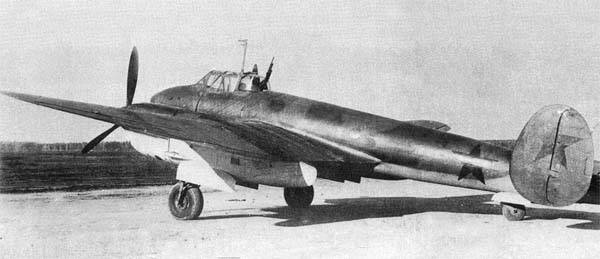
It seems logical that way, but most are inclined to believe that “bis” is a Russian transcription of the word “bis”, which means “second version”. In Latin bis, twice.
This marking was used to indicate a new version of an existing product, if for some reason the designation of a new model is not introduced.
The Pe-3bis fighter was born following the appeal of the commander of the 95 IAP Colonel Pestov and the comics of the same regiment, Captain Zhatkov, directly to the Secretary of the Central Committee of the All-Union Communist Party of Bolsheviks, Malenkov, criticizing the Pe-3 aircraft.
As a communist to a communist.
Zhatkov described in detail all the shortcomings of the Pe-3, duplicating the report of the experts of the Air Force Research Institute. Colonel Pestov criticized the complete lack of defense against enemy defensive fire.
According to the pilots, the fighter should urgently set up the nose armor protection, the ShVAK gun and replace the top installation of the navigator with ShKAS with a turret with a heavy machine gun BT.
Zhatkov ended his appeal with the words: “Our pilots are ready to fight in any machine, including this one, but people and cars are too dear to us now, and there is no point in sacrificing for the enemy’s small blood.”
Perhaps it is worth noting that the “critic” Zhatkov ended the war as lieutenant colonel, commander of an air regiment.
Malenkov, instead of imprisoning, trying, and shooting Zhatkov and Pestov, who criticized Soviet technology, demanded that the Air Force command urgently understand the situation and report back.
Here, from the pilots of the 40 SBAP, who had also embarked on the re-equipment of this aircraft, the design bureau of the factory No. 39, where the Pe-3 was produced, also received an expression of extreme displeasure.
So after Malenkov's roar, the flaws should be eliminated, and urgently eliminated. Design proposals were entrusted to the design bureau of plant No.39 and as a result, an experienced advanced Pe-3bis aircraft appeared.

The experienced Pe-3bis differed from the serial Pe-3 in the following:
- completely removed the glazing, which only interfered;
- instead of the BK machine guns, two UBK machine guns (with 250 rounds per barrel) and a ShVAK cannon with ammunition 250 rounds were installed in the bow;
- instead of the upper turret mount of the navigator TSS-1 with a ShKAS machine gun, a mobile unit with a UBT machine gun and 180 ammunition in a rotating turret was mounted; - - wing consoles equipped with automatic slats;
- reduced the length of the lamp of the cockpit, and also moved forward by almost half a meter anti-skid frame;
- the filling system for gas tanks with nitrogen was replaced with the so-called filling system for tanks with cooled exhaust gases of engines;
- mounted anti-curtain curtains on all glass windows;
- Installed the anti-icing system on the screws and windshield of the flashlight.
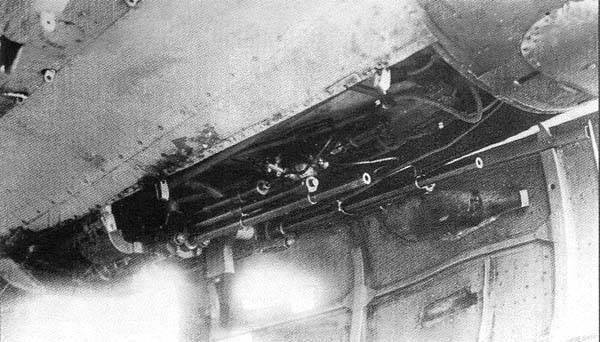
The reservation was strengthened: the front of the pilot was covered with separate armored plates from 4 to 6,5 mm thick, the pilot's armored seat was made of steel with 13 mm thickness, the lower cockpit hatch was reserved to protect against accidental shots from the UBC at the time of boarding the plane.
The total mass of armor increased to 148 kg, and the total mass of Pe-3bis increased by 180 kg compared to Pe-3.
The speed at altitude decreased to 527 km / h, but the speed at ground increased to 448 km / h. Automatic slats somewhat simplified the piloting technique, especially on landing, because the Pe-3 inherited not the best features from the Pe-2 in this regard.
What about the airplane? He was, he fought. They released Pe-3 and Pe-3 bis in total about 360 units, so by and large, this is a drop in the bucket for a fighter.
Moreover, Pe-3 fought mainly not in that capacity. Only about 50 machines were used as fighters, the rest fought by scouts, bombers, spotters, training aircraft.
By the end of the summer of 1944, in the Red Army Air Force units there were no more than 30 units of Pe-3 different variants, and not a single regiment was fully armed with them.
Mostly aircraft were used for visual and photographic reconnaissance. As before, the Pe-3 used the Air Force of the SF (95-IAP, 28-I ORAE).
Here, perhaps, more valuable is the work that was done in Irkutsk to bring the car to mind. Pe-3 was never completed, we admit, but many of the things that were used for the first time continued to work on other aircraft.
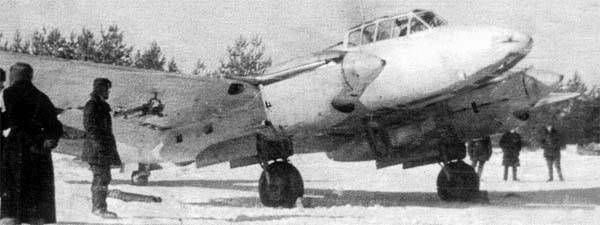
LTX Pe-3bis
Wingspan, m: 17,13
Length, m: 12,67
Height, m: 3,93
Wing area, square m: 40,80
Weight, kg
- empty aircraft: 5 815
- takeoff: 7 870
Engine: 2 x M-105RA x 1050 hp
Maximum speed km / h
- by the ground: 448
- at height: 527
Practical range, km: 2 000
Practical ceiling, m: 8 800
Crew, prs: 2
Armament:
- one 20-mm ShVAK gun and two 12,7-mm UBC machine guns offensive;
- one 12,7-mm machine gun UBK and one 7,62-mm machine gun ShKAS defensive;
- bomb load - 2 x 250-kg under the fuselage and 2 x 100 under the nacelles
Sources:
Alexander Medved, Dmitry Khazanov. Unknown Pe-Xnumx.
Andrey Morkovkin. Third pawn (proza.ru/2019/06/23/1114).
Information